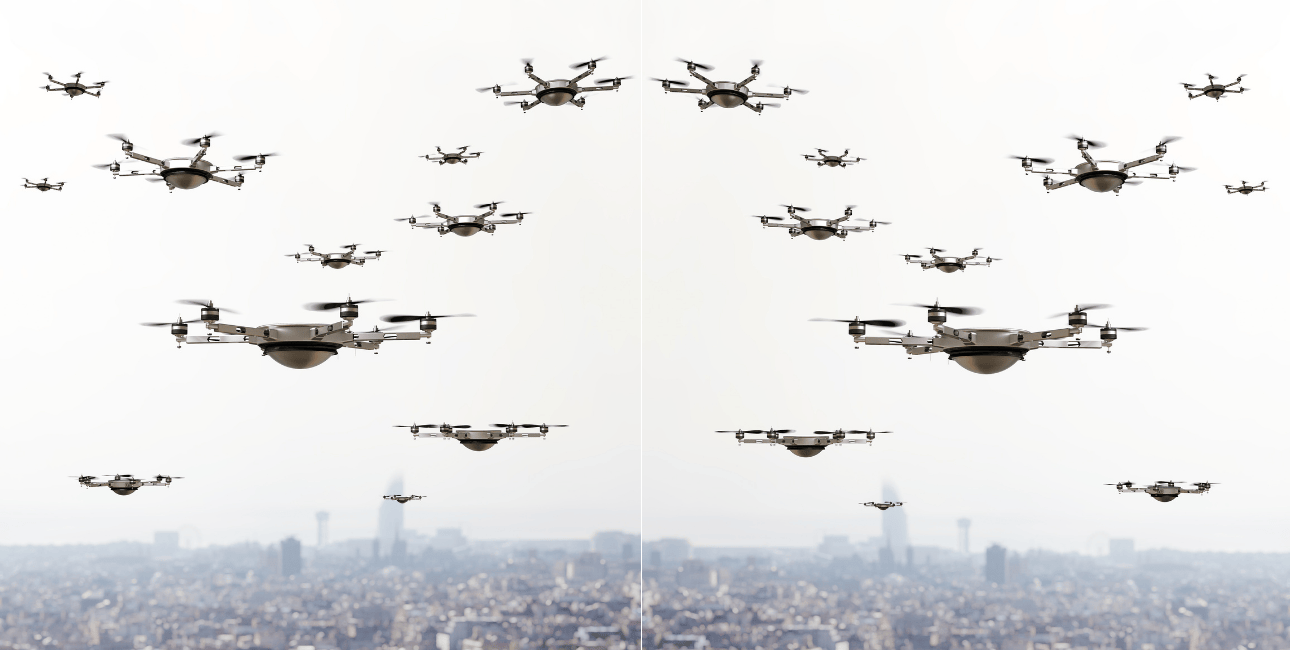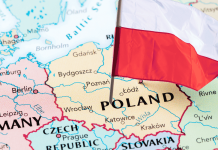With tensions between Russia and NATO escalating, a new ISW (Institute for the Study of War) report has concluded that Moscow may be meticulous and slowly laying the ground for a potential conflict with NATO.
“Russia appears to be accelerating the informational and psychological condition-setting phase — ‘Phase 0’ — of its campaign to prepare for a possible NATO-Russia war in the future,” states the ISW assessment.
The assertion is based on a recent accusation made by Russia against Ukraine and the United Kingdom.
On October 6, the Russian Foreign Intelligence Service (SVR) alleged that the UK is preparing a group of pro-Ukrainian Russians to attack a Ukrainian Navy ship or a foreign civilian vessel in a European port.
It claimed that the saboteurs would be made to say that they were carrying out orders from Moscow. Further, it alleged that the UK intends to provide the group with underwater gear manufactured in China so that it can accuse the People’s Republic of China (PRC) of aiding Russia’s war against Ukraine.
The ISW report states that the SVR has been making these kinds of statements more frequently in recent weeks, which marks a new coordinated pattern of activity.
The October 6 claim follows similar SVR false flag claims that target European states like Poland, Moldova, and Serbia.
“Russia appears to be conducting concerted preparations as part of the physical and psychological condition-setting phase for war contingencies,” the report alleged. “Russia has been engaged in a variety of overt and covert attacks against NATO states, such as sabotage missions, electronic warfare (EW) interference, GPS jamming, and arson, in recent years.”
The report also referred to the latest incidents of drone incursions. The ISW calls this ‘Phase 0’ and says, “This pattern of organized activity suggests that Russia has entered the first phase of preparations — ‘Phase 0’ — to move to a higher level of war than the one Russia is currently engaged in, such as a future NATO-Russia war.”
2/ Read the full assessment⬇️
Russian Offensive Campaign Assessment, October 6, 2025: https://t.co/maLU0PIC2X pic.twitter.com/wX8pcejM7y
— Institute for the Study of War (@TheStudyofWar) October 7, 2025
The report, however, adds that the ISW is not yet evaluating whether the Kremlin has decided to wage a more intense conflict or when it might do so.
“Russia has been undertaking longer-term plans that ISW assesses may be part of preparation for a NATO-Russia war in the future, such as the restructuring of Russia’s military districts on its western border and the buildup of military bases on the border with Finland.”
The report states that there is no confirmation that Russia is currently preparing for a battle with NATO, implying that a broader conflict with the US-led alliance is not imminent.
At the same time, it alleges that with a potential ‘false flag’ operation, Moscow wants to instil fear in NATO to garner more concessions in its war with Ukraine, and dissuade NATO countries from supporting Ukraine’s war or shoring up their own defenses.
“These efforts are part of Russia’s wider reflexive control campaign that aims to push Russia’s opponents to make policy decisions that actually benefit Russia. The Kremlin’s use of the SVR’s repeated false flag claims aims to affect the Russian population’s views of the West, framing Western actors — not Russia — as responsible for attacks or threat of attacks,” it stated.
It further said that by doing all this, Russia is practically setting conditions to justify and garner public support for any potential Russian aggression against NATO in the future.
Additionally, the report mentions the drone incursions over NATO states.
On the evening of October 5–6, Norwegian authorities reported what they believed to be unidentified drones flying over Norway’s Gardermoen International Airport. The Norwegian Eastern Police District reported that between three and five drones were spotted, prompting the airport to be temporarily shut down.
The potential sighting has not yet been verified by Norwegian law enforcement, and no particular actor has been linked to the incident.
Meanwhile, Germany suspects a Russian role in drone sightings. Chancellor Friederich Merz stated on October 5 that he “assumes” that Russia was behind “most” of the drone flights that forced German authorities to close the Munich Airport on the nights of October 2 to 3 and October 3.
He alleged that these drones were conducting espionage and reconnaissance and aimed to spread fear among the German population.
German newspaper Bild reported that a laser-based air defense system has been deployed near the Munich airport to protect it from drones.
The German government has not attributed these sightings to Russia, but Bavarian Minister-President Markus Söder stated that Russia intended the drones over the Munich Airport to make Germans nervous or scare the population.
Last month, swarms of Russian drones entered Polish airspace—a move that was termed a serious provocation by NATO. This was followed by similar incursions into the Romanian airspace and a breach of Estonia’s airspace by Russian MiG-31K fighter jets.

In addition to this, drones have been spotted over Denmark, Norway, and Sweden, all of which are believed to have a link with Russia, although this has not been proven.
In fact, Danish Prime Minister Mette Frederiksen said that a “hybrid war” in Europe is underway, describing it as “the most difficult and dangerous situation since the end of the Second World War,” as recently reported by the EurAsian Times.
Game Of Drones In The Ukraine War
Russian forces conducted their first-ever fibre optic First Person View (FPV) strike in Kramatorsk, Donetsk, on October 6. The strike occurred 20 to 22 kilometers from Russia’s closest frontline positions on the Chasiv Yar-Zaliznyanske line (southeast of Kramatorsk) and a few blocks from the H20 Slovyansk-Kostyantynivka highway, which traverses the entire length of Ukraine’s fortress belt in Donetsk Oblast.
While nobody was hurt in the strike, Ukraine has been alarmed by a fiber-optic FPV drone strike on one of its biggest eastern cities.
The concern arises because drones that connect to their controllers using extremely long spools of fiber-optic wire are impervious to jamming and topographical characteristics that may obstruct line-of-sight radio transmissions, unlike radio-connected drones.
Despite their drawbacks, which include a range limited by the length of the wires they trail and a diminished degree of mobility, the resilience of these fibre optic drones makes them extremely dangerous.
Russian radio-controlled FPV drones have been attacking Kramatorsk, located 12 miles from the front lines in the war-torn east of Ukraine, and it is a key logistics hub.
However, the use of fibre optic FPV has essentially increased the range of attack, which poses the risk of deepening the front lines and putting civilians at greater risk.
A video of the attack showed the drone hovering over a comparatively immaculate street before making a quick left turn and hitting a pickup truck, similar to those used by the Ukrainian Army.
The Russians began using fiber optic wires on the FPV drone last year, and Ukraine swiftly adopted this technique. Although both sides have since produced fiber-optic-controlled FPV drones capable of flying up to 25 miles, most currently in use only fly a small portion of that distance while carrying considerably smaller wire spools, as per recent media reports.
This is why the increasing range of Russia’s fiber-optic-controlled FPVs has rattled Ukraine.
“Russian forces are expanding their employment of fiber optic drones, including by equipping relatively cheap Molniya fixed-wing FPV drones with fiber optic cables to make the Molniyas immune to Ukrainian electronic warfare (EW). Russia is also reportedly producing over 50,000 fiber optic drones per month. Successful Russian efforts to scale up their fiber optic FPV strikes against fortress belt cities and nearby GLOCs would significantly hamper Ukrainian logistics in Donetsk Oblast,” the ISW report stated.
Meanwhile, Ukraine is continuing to launch long-range drone strikes against Russian defense industrial units and oil refineries. It announced that it conducted audacious long-range drone strikes on a major ammunition plant, an oil terminal, and a weapons depot deep inside Russian territory on October 6.
The Ukrainian General Staff announced that Ukrainian forces had attacked the Sverdlov Plant in Dzerzhinsk, Nizhny Novgorod, on the evening of October 5–6. The Sverdlov Plant is one of Russia’s biggest producers of explosives, which makes aerial bombs, ammunition for artillery and aviation shells, warheads for anti-tank guided missiles, ammunition for Russian engineering forces, and warheads for air defense missiles.
Separately, the Naval Oil Terminal in seized Fedosia, Crimea, which supports Russian forces in Ukraine and moves oil and oil products from railroad carriages to sea boats and road transport vehicles, was hit by Ukrainian forces and caught fire.
Major Robert Brovdi, commander of the Ukrainian Unmanned Systems Forces (USF), stated that the drone operation against the oil terminal was carried out by USF forces. With a tank capacity of 250,000 cubic meters, the facility is the largest transshipment point for oil in Crimea.
The idea is to weaken Russia’s war-fighting capability, a strategy deployed by Moscow since the initial days of the invasion, which saw large-scale attacks on Ukrainian infrastructure.
Meanwhile, Ukrainian President Volodymyr Zelensky lobbied his allies for more air defences on Sunday, warning that Russia was “taking advantage” of attention shifting away from Ukraine.
“Russia is now taking advantage of the moment — the fact that the Middle East and domestic issues in every country are getting maximum attention,” Zelensky said in a readout of his call with Macron.
In his call with Trump on Sunday, his second in two days, Zelensky said the two countries would work to boost Ukraine’s “defence capabilities”.
“We agreed with President Trump that our teams, our military, would handle everything we discussed,” Zelensky said, without elaborating. The White House did not immediately comment on the call.
- Contact the author at sakshi.tiwari9555(at)gmail.com
- Follow EurAsian Times on Google News




